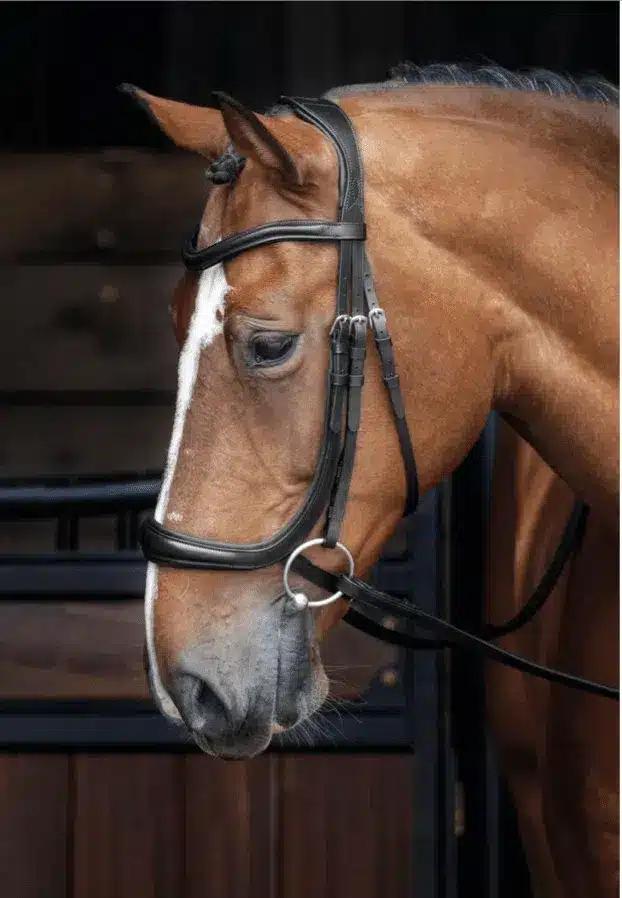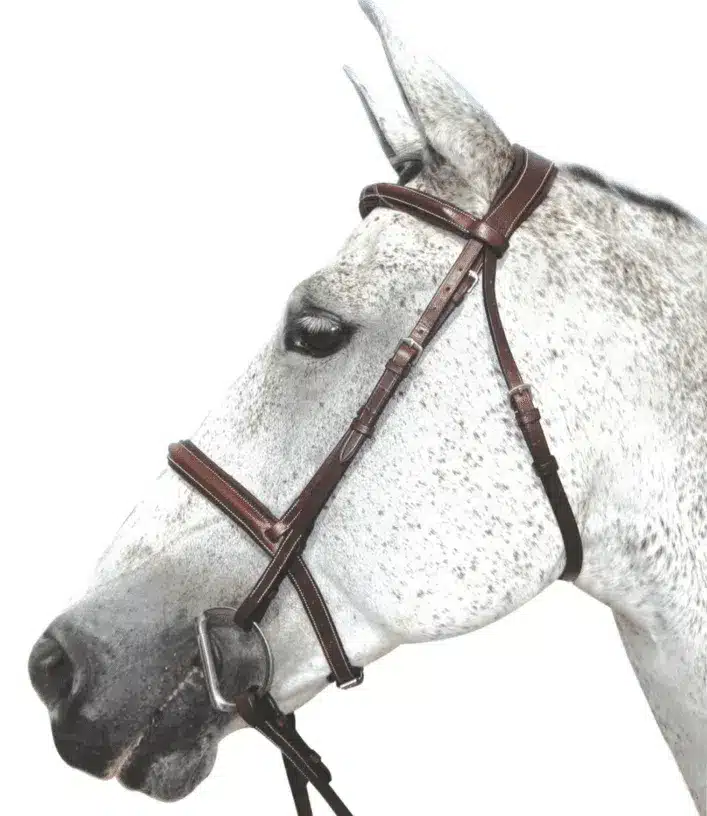Horse Bridles 101: How to Choose, Fit, and Use the Right Bridle
If you own a horse, ride, or are just starting out, you need to understand the bridle. Horse bridles are more than just a tool for steering, they’re key to effective communication between horse and rider.
Choosing the right bridle is important. It helps your horse feel comfortable and perform well. A good fit makes a big difference in your horse’s experience.
In this guide, we will explain the different types of horse bridles. We will also discuss their common uses. Finally, we will give tips to help you find the perfect fit for your horse.
What is a Horse Bridle?
A bridle is a piece of riding gear. It fits over a horse’s head. Riders use it to guide and control the horse. Horse bridles typically include the headstall, bit, and reins, although some bridles (like bitless bridles) do not use a bit.
The bridle is the main way for the rider to communicate with the horse. It sends small signals from the rider’s hands to the horse’s mouth, nose, or poll.
Types of Horse Bridles
Several different types of horse bridles exist, each suited to specific riding styles, disciplines, and individual horse needs. Here are some of the most commonly used bridles:
1. English Bridle
The English bridle is commonly used in disciplines like dressage, jumping, eventing, and hunter classes. It usually includes a cavesson (noseband), browband, and a bit. Several subtypes exist within this category:
- Snaffle Bridle: Most commonly used in dressage and basic schooling.
- Double Bridle (Weymouth Bridle): Used in upper-level dressage, with two bits and two sets of reins.
- Figure 8 or Grackle Bridle: Offers additional control and is popular in eventing and show jumping.
2. Western Bridle
Western bridles are often simpler and lack a noseband. You can adorn them with decorative elements like silver conchos or tooling. Subtypes include:
- One-Ear and Two-Ear Bridles: Common in Western pleasure riding.
- Working Bridles: Designed for utility and durability in disciplines like reining or ranch work.
3. Bitless Bridle
Bitless bridles use pressure points on the horse’s head rather than a bit in the mouth. These are ideal for horses with dental issues, bit sensitivity, or riders who prefer a gentler approach. Popular styles include:
- Hackamore: Uses nose pressure instead of a bit.
- Side Pull Bridle: Offers lateral control, great for groundwork and starting young horses.

4. Halters with Reins (Rope Bridles)
People often use these in natural horsemanship or groundwork. They combine a rope halter with reins. This setup allows for riding without a bit or a traditional bridle.
Choosing the Right Horse Bridles
When selecting horse bridles, consider the following:
- Discipline: Dressage, jumping, trail riding, or Western events all have preferred bridle styles.
- Horse’s Mouth Sensitivity: A sensitive-mouthed horse may do better with a padded or bitless bridle.
- Training Level: Young or green horses may benefit from bridles that provide clear, gentle cues.
- Fit & Comfort: The bridle should fit properly without causing pressure points or interfering with movement.


Bridle Fitting Tips
A poorly fitted bridle can cause discomfort, behavioral issues, and even physical damage. Follow these tips for a good fit:
- Browband: Should lie flat against the horse’s forehead without pinching ears.
- Crownpiece: Should sit behind the ears and distribute pressure evenly.
- Throatlatch: Should allow about four fingers between it and your horse’s throat for easy breathing.
- Noseband: Should not be tight—two fingers should fit under it comfortably.
- Bit Placement: The bit should rest gently in the corners of the mouth with one small wrinkle.
Always adjust your bridle while your horse is standing calmly. If you’re unsure, ask your trainer or tack professional for help.
Caring for Your Horse Bridles
Regular cleaning and conditioning will keep your horse bridles in good shape and extend their life. Use a damp cloth to wipe off sweat and dirt after each ride. Routinely take the bridle apart for deep cleaning with saddle soap and leather conditioner. For synthetic bridles, just rinse and air dry.
Properly Fitted Horse Bridles
A well-chosen and properly fitted bridle helps build trust between you and your horse. Many types of horse bridles exist. Knowing their differences and uses is important.
You should also consider your horse’s needs. No matter if you are showing, schooling, or riding for fun, the right bridle helps you communicate clearly. This makes the ride more enjoyable for both of you.
Invest time in finding the best bridle for your horse, and don’t hesitate to ask a professional for guidance. After all, a comfortable horse is a happy horse.

